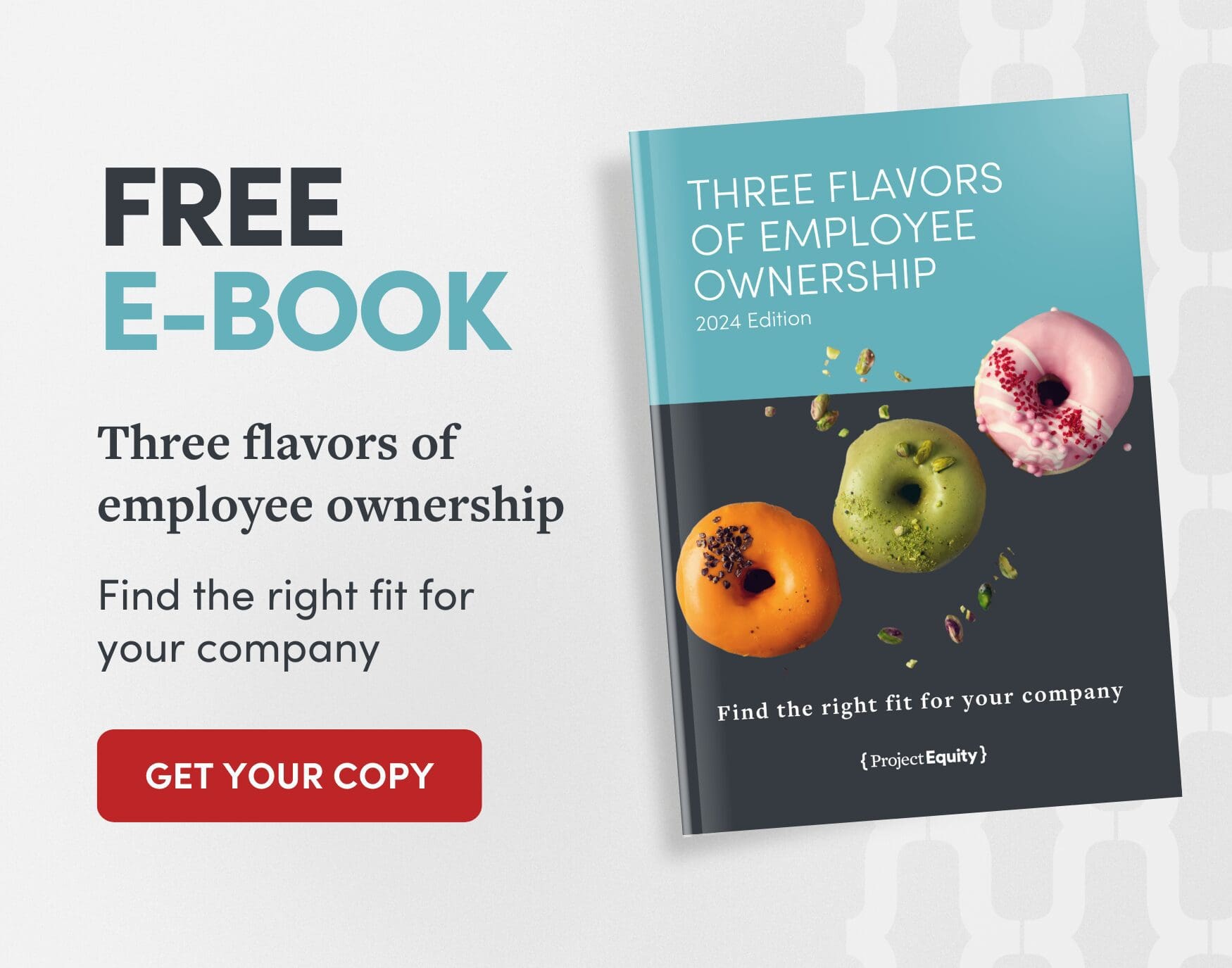When is a business a good fit for a worker cooperative transition?
- Laura Flores
From smaller organizations like the Watershed Nursery (who are featured in this blog’s photo) to larger businesses like Cooperative Home Care Associates, worker cooperatives—known as coops—are one of the most popular types of employee ownership after Employee Stock Ownership Plans (ESOPs).
What is a cooperative?
A worker cooperative model provides direct ownership and governance to employee-owners as well as annual profit-sharing, a.k.a. patronage. Worker-owners pay a small equity buy-in to participate.
Its main differentiating factors from other types of employee ownership (EO) are its principles.
Seven worker-owned cooperative readiness factors
When is a business ready to transition into a worker cooperative?
Throughout our work with cooperatives throughout the years, we’ve identified the attributes that businesses have that would be a good fit for a coop transition.
1. Flexible for businesses of any size with W2 employees
Unlike ESOPs, coops can be designed for a business with any amount of employees because they’re less complex to set up and maintain, more affordable to transition and less costly to run.
2. Ownership culture supported by leadership and employees
Coops work best when selling owners and succession management want to see employees rewarded, retained and engaged in an ownership culture. That’s because in a coop, equity and governance are managed by the employee-owners. Any employee-owners who pay a small equity buy-in elect the Board of Directors, which, unlike many privately held companies, is made up mostly or entirely of employee-owners.
3. Succession leadership identified or in development
For a business to be ready for a worker coop transition, a selling owner has to have replacement leadership in place for when they stop having an operational role in the business. The good news is that the selling owner can flexibly design their exit plan with a worker cooperative transition, so they don’t have to exit immediately.
4. Employees value profit-sharing over retirement benefits
A business is a good fit for a coop if employees are more interested in profit-sharing than retirement benefits, which ESOPs provide. We’ve often found that businesses with a younger and/or more transitory workforce prefer receiving annual patronage payments over having to wait to access their profits when they exit the company, but this can apply to really any workforce.
A quick note: Coops can still offer retirement benefits—and many do—but their main wealth-building opportunity is through profit-sharing, whereas with ESOPs, the main wealth-building opportunity is through retirement benefits.
5. Strong participatory management and employee engagement
Coops are inherently designed for democratic governance. All employee-owners have votes as members, and as mentioned before, employee-owners make up the majority of the Board, who are voted to their positions by their peers. Also, employee-owners vote on major strategic decisions as defined in the bylaws, whether at the management or governance level. Coops often practice open-book management, actively sharing financials and making decisions about budgetary matters.
As a result, businesses considering being coops should have participatory management in place or a desire for it. High employee engagement will be required for success. In addition, both the selling owner and employees should have a willingness for the business to have a strong employee governance role.
6. Can afford ongoing maintenance costs (~$5k annually)
Businesses will need to be able to pay up to $5,000 in annual maintenance fees from their operational expenses in order to run the cooperative. The good news is that worker coops are less expensive to maintain than ESOPs or Employee Ownership Trusts (EOTs), making them the most affordable EO option. That’s why many businesses choose to transition into worker cooperatives.
7. Solid financial health with stable future outlook
Businesses should have minimal debt, strong financial health over the past five years and a positive future business financial forecast to be ready for a coop transition. It’s important for the business to be both successful and stable at the time of the conversion. Also, the business should have financial scenarios that ensure the ability to cover the cost of the buy-out capital even in business cycle downturns.
What if a business is a good fit for a coop?
Are you a business owner who found that your company checks the boxes on this list? Great! We’d love to connect. Schedule a free consultation with our team, and we can talk through your goals for the future of your business.
Are you an advisor who’s interested in becoming an expert in worker coops? Check out our accredited EO courses about them. Have a client who’s interested in transitioning into a coop? Reach out to us, and we can work in conjunction on the transition.
Not a good fit for a coop? Consider an EOT instead
EOTs are an excellent alternative to coops. An EOT is a type of Perpetual Purpose Trust that offers an option that safeguards employee ownership over the long term by using a trust structure that can incorporate democratic governance qualities found in cooperatives.
Like coops, they have lower setup and administrative costs compared to ESOPs. They can also be more flexible than coops and, differing from coops, are free to employees. EOTs are also appropriate for companies of all sizes.
If you’re a business owner, we can talk through EOTs versus worker cooperatives and help you choose the best option for your company. Get a free consultation, and we’ll dive in more.
If you’re an advisor who wants to learn more about EOTs, explore our accredited EOT courses. We also welcome you to contact us so we can partner together to help them successfully transition.
Your business should demonstrate solid financial health—minimal debt, consistent profitability, and a stable outlook for the future. You also need to budget for ongoing cooperative maintenance costs, typically up to $5,000 annually—a relatively modest amount compared to ESOPs or EOTs.
About the author
As a Client Services Manager for Project Equity, she simplifies the process for owners to sell their business and for employees to become owners. She is an agile facilitator and capacity builder with a knack for making information accessible and engaging diverse audiences. She received her BA in Global Studies from the University of California Santa Barbara and an MBA from Mills College. She is a wannabe bookworm who enjoys a good cortado, meditating, and nurturing her creativity.



